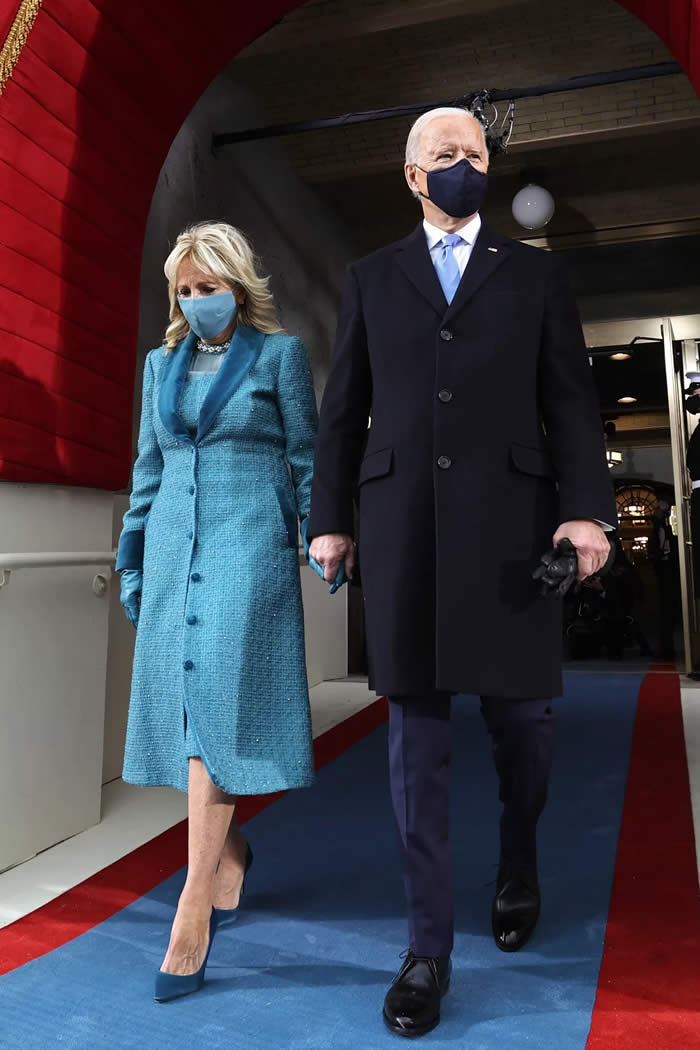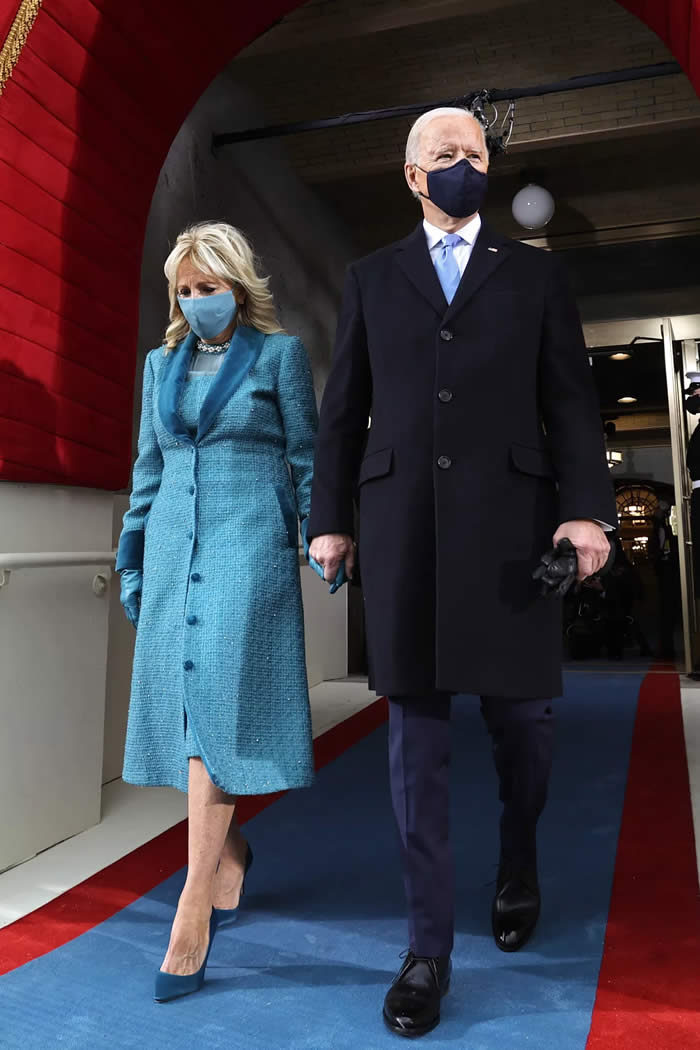America needed a lift.
Pandemic- and insurrection-fatigued, at home in sweats watching the first live, star-studded events in months, we found it in the vivid clothing, rousing words and songs on the inaugural stage and screens where politicians, pop stars and pro athletes mixed with high school band leaders, essential workers and other “heroes next door.”
The fashion quotient came as a pleasant surprise. And if there wasn’t an official dress code, there might as well have been. Color, the whole ROYGBIV spectrum of it, was on full display in the typically male, dark suited Capitol on Wednesday morning. The ocean blue, blazing violet, beaming yellow, earthy green and punchy pink highlighted the power of women in the new Biden administration, which has already appointed a number of them to top posts, and made Kamala Harris the first woman and the first woman of color to be vice president.
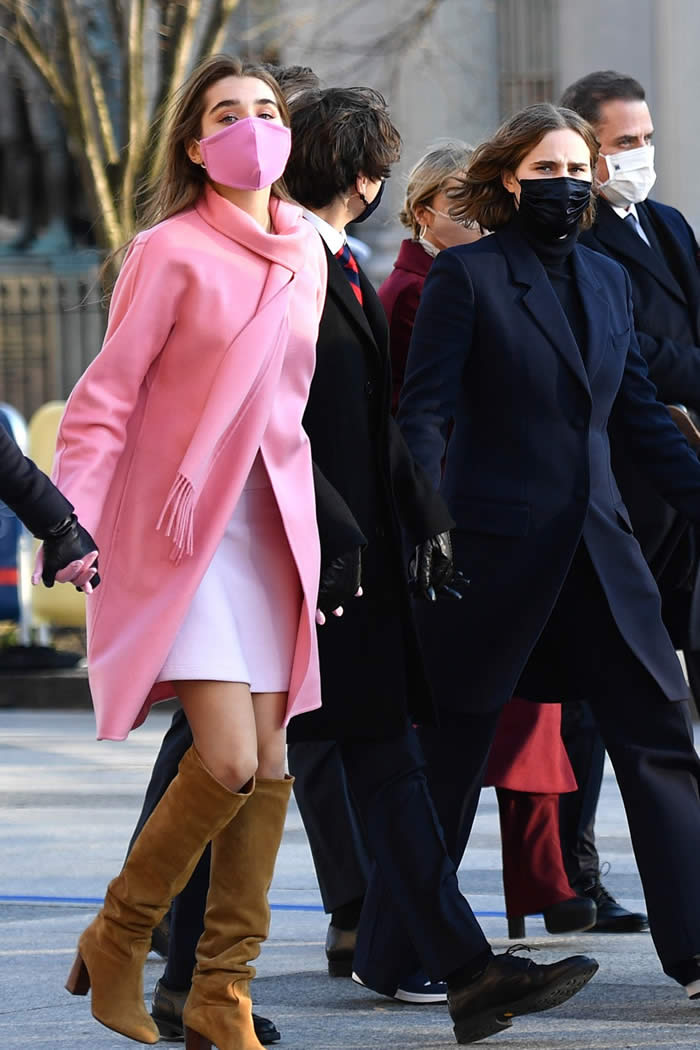 There were plenty of storylines to follow. Jill Biden in a blue coat and dress by New York-based brand Markarian inspired by Grace Kelly? A princess moment for the first lady and designer. Lady Gaga in a life-size Schiaparelli peace dove brooch by an American designing in Paris? Pure Hollywood U.S.A. Harris wearing looks by rising Black designers Christopher John Rogers and Sergio Hudson — after wearing Kerby Jean-Raymond’s Pyer Moss the night before? She acknowledged fashion’s reckoning with race and representation, and lifted them up beside her.
There were plenty of storylines to follow. Jill Biden in a blue coat and dress by New York-based brand Markarian inspired by Grace Kelly? A princess moment for the first lady and designer. Lady Gaga in a life-size Schiaparelli peace dove brooch by an American designing in Paris? Pure Hollywood U.S.A. Harris wearing looks by rising Black designers Christopher John Rogers and Sergio Hudson — after wearing Kerby Jean-Raymond’s Pyer Moss the night before? She acknowledged fashion’s reckoning with race and representation, and lifted them up beside her.
“I want to normalize African American designers being American sportswear designers. That’s the lane I want to be in; that has not been carved out, but as we saw today, for a person of color, the door can open wide for everyone,” said Hudson, who made the custom tuxedo coat and dress worn by Harris to Wednesday evening’s celebration.
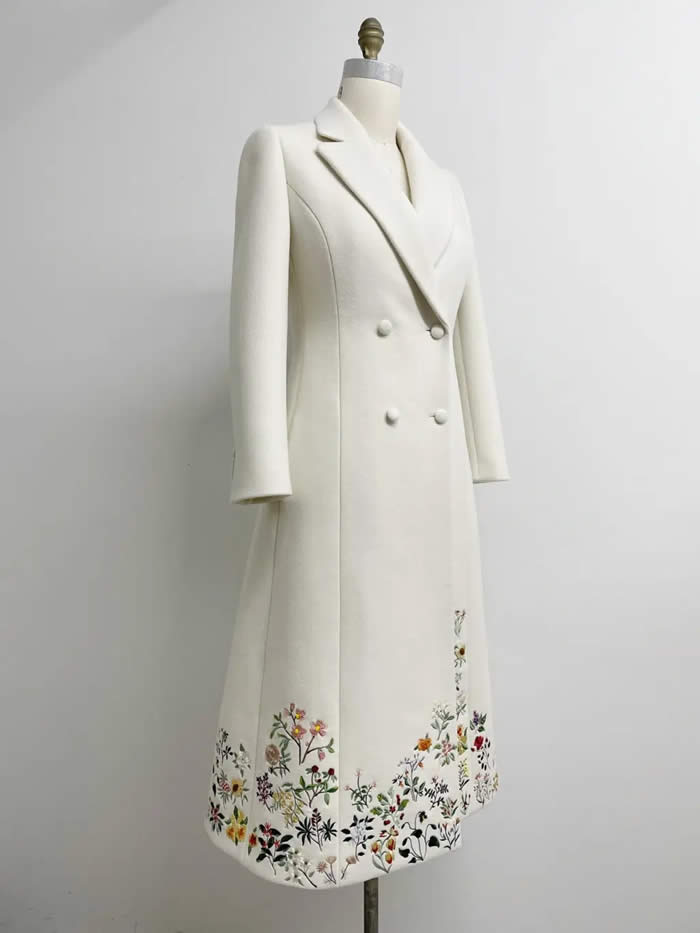
The men also made symbolic style statements, both President Joe Biden and Second Gentleman Doug Emhoff wearing Ralph Lauren Purple Label suits and coats made in one of America’s few remaining apparel manufacturing factories in Rochester, N.Y., campaigning for the administration’s “Made In All of America” plan on Day One.
The Bidens and Harris-Emhoffs, blended families both, are the new look of America, not one of reality-show packaged faux perfection, but of work-in-progress realness, new gender norms, representation and inclusion.
They dressed with intention, ushering in a new era of compassionate leadership through style as mastered by British royals and former First Lady Michelle Obama, wearing their values on their sleeves like the Gabriela Hearst embroidery on Jill Biden’s suffragette white inauguration evening coat and dress made from existing available fabrics to minimize the effect on the environment.
On it, a flower after each state and territory to convey unity, with Delaware closest to the first lady’s heart. In the lining, there was a quote from Benjamin Franklin to honor Biden’s career as a teacher, which she will continue while living in the White House: “Tell me and I forget. Teach me and I remember. Involve me and I learn.”
Distant from the Trump brand of self-serving too-muchness, the support of next-generation designers like Hearst, Rogers, Hudson, Jean-Raymond, and other small business owners struggling through COVID-19, suggested a new possible future for American fashion — small, local, more considered, sustainable and meaningful. (Let’s not forget Bernie Sanders’ meme-generating, handmade Vermontcore mittens! About as local as it gets.)
“Fashion is a business and to highlight that sends an important message. We work with factories and artisans, studios and pattern makers that support the economy,” said Jonathan Cohen, who dressed Jill Biden in a purple “unity” coat and dress for her arrival in Washington on Tuesday night. “That’s an important discussion. It’s a business, not just clothing.”
The message was you are what you wear, so it better stand for something, whether it’s purple nodding to party unity or the campaign colors of the first Black woman to be elected to the U.S. Congress and be a major party’s nomination for president, Shirley Chisholm; a coat by a young Black designer; a sustainable mask, or a dress embroidered by hand in NYC’s Garment District. There has to be a reason to put one more thing into the world, with the toll it can take on the environment, on workers, on personal time.
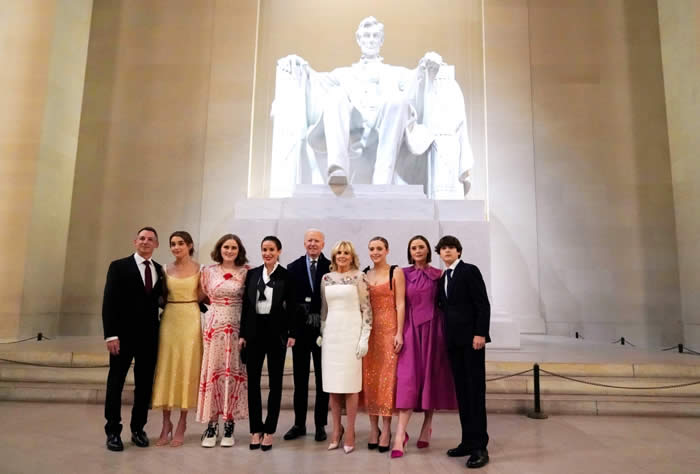 “Fashion is challenging, it’s arduous but moments like these, you realize what you make isn’t just for consumption, it’s for the world to view,” said Prabal Gurung, who designed the garnet double-faced wool crepe tailored dress and coat, made in New York, that Harris wore to Thursday’s inaugural prayer service.
“Fashion is challenging, it’s arduous but moments like these, you realize what you make isn’t just for consumption, it’s for the world to view,” said Prabal Gurung, who designed the garnet double-faced wool crepe tailored dress and coat, made in New York, that Harris wore to Thursday’s inaugural prayer service.
“What makes American fashion relevant is that what we do is talk about style and substance together. Whether it’s racial diversity, size, age, gender, we are in the forefront of these conversations. It’s not the Europeans, it’s not the established designers. The soul of the global fashion industry is in America and we have the loudest mic.”
The inaugural theme was unity, and there was something of that to be read in the visual impact of monochromatic dressing, including Obama wearing a striking purple pantsuit and duster coat by L.A. designer Hudson, nodding to Chisholm and the suffragettes. From many colors, one. Even former First Lady Laura Bush joined the color brigade, lending bipartisan support in light blue.
While there was a constellation of Hollywood stars throughout the day and night’s festivities, including Jennifer Lopez singing “This Land Is Your Land” in all-white Chanel (couldn’t she have worn American?), and a show stopping Katy Perry wearing a white satin corset and floor length skirt by Thom Browne igniting fireworks in front of the Washington Monument, there were other more humble role models, too.
On the stage Wednesday morning and evening was a multigenerational group with someone of every age to look up to — from 22-year-old poet Amanda Gorman rewearing a favorite yellow Prada coat, to the Biden children and grandchildren, Harris-Emhoff stepchildren and nieces in sequins and sneakers, Rodarte and Batsheva.
Social worker Ashley Biden, 39, one of the day’s new style stars, wore a Gabriela Hearst coat dress and boots that captured almost as much attention as the Dior Jordans worn by Nikolas Ajagu, partner of the vice president’s niece Meena Harris.
“Although it’s a pretty silly example of representation, there’s something to be said about seeing a fellow sneaker enthusiast sitting alongside our president and vice president at their inauguration,” said Bobby Kim, founder of the L.A.-based streetwear brand The Hundreds. “For much of the streetwear community, the United States government is a distant planet from our everyday experiences. Nik wearing relatable sneakers shows us it’s not only possible for us to enter that space but that we can also change it.”
Possibility. That’s what was in the air.
If Obama helped make Jason Wu, Isabel Toledo and Thom Browne into known names, those worn in Washington during the Biden inauguration festivities could be our next great American designers.
“We have to reconsider what a successful designer looks like. We can no longer equate it to a billion-dollar business and x-y-z fragrance license,” Gurung said. “In a world in climate crisis where the industry is largely responsible, we have to look beyond a $5 million fashion show to define us. We can still affect culture in the most profound, direct way.”
The Biden administration has extended a hand to the industry, and now it will also be up to designers and business owners to address its most urgent call — how to unite, communicate with and sell to the other half of the nation who did not vote for him.

